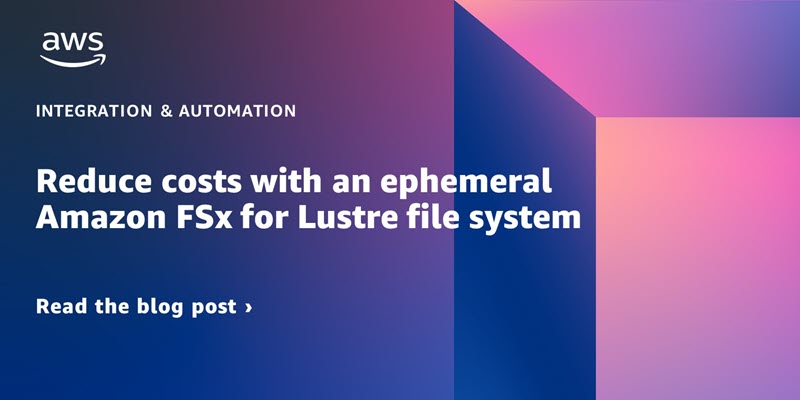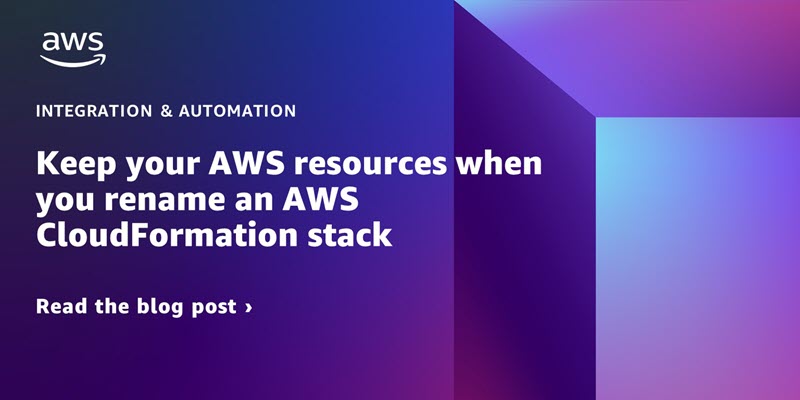Integration & Automation
Category: Amazon CloudWatch
Build workflows-as-code automations for AWS services using Flowpipe
Learn about Turbot’s cloud scripting engine Flowpipe along with practical examples for automating cloud operations on AWS.
Optimize AWS event and log collection using common design patterns
Learn about some common approaches for collecting data from multiple AWS services across your organization, including common patterns with code samples that you can reuse to consume the data.
Reduce costs with an ephemeral Amazon FSx for Lustre file system
Create an ephemeral Amazon FSx for Lustre file system that’s active on an as-needed basis, allowing you to pay for services only when the system is used. With the file system running only when needed, you can still benefit from a powerful system with fast processing speeds without the high costs associated with a continuously running implementation.
Keep your AWS resources when you rename an AWS CloudFormation stack
Learn how to change the name of a CloudFormation stack without deleting the resources that it manages. In the walkthrough, which uses a simple architecture with a single resource, a virtual private cloud (VPC), you add a Retain attribute to the resource’s deletion policy so that the resource isn’t lost when that stack is deleted.
Reduce log-storage costs by automating retention settings in Amazon CloudWatch
Learn how to reduce log-storage costs by automating retention settings in Amazon CloudWatch. By default, CloudWatch Logs stores log data indefinitely, which is helpful. But as AWS workload logging grows, so do your log-storage costs. To reduce costs, establish a log-retention policy and apply it across all your log groups, ideally automatically.
Collect custom metrics with Amazon CloudWatch strategic tagging
Learn how to use an Amazon CloudWatch agent to automate the collection of custom metrics for two Amazon EC2 instances. The solution is based on a tagging strategy combined with AWS Systems Manager State Manager to enforce specific CloudWatch agent configurations for EC2 instances that are tagged appropriately.
Deploy bastion hosts into private subnets with AWS CDK
Learn how to use AWS CDK to deploy bastion hosts into private subnets of a VPC.
Automate VPC tagging with AWS Control Tower lifecycle events
Automatically tag resources in an AWS account created by AWS Control Tower.
How to automatically subscribe to Amazon CloudWatch Logs groups
Automatically discover new log groups and add them as triggers to your existing Lambda functions.
Run code before terminating an EC2 Auto Scaling instance
Learn how to create an AWS CloudFormation template that runs code prior to terminating an EC2 Auto Scaling instance.









